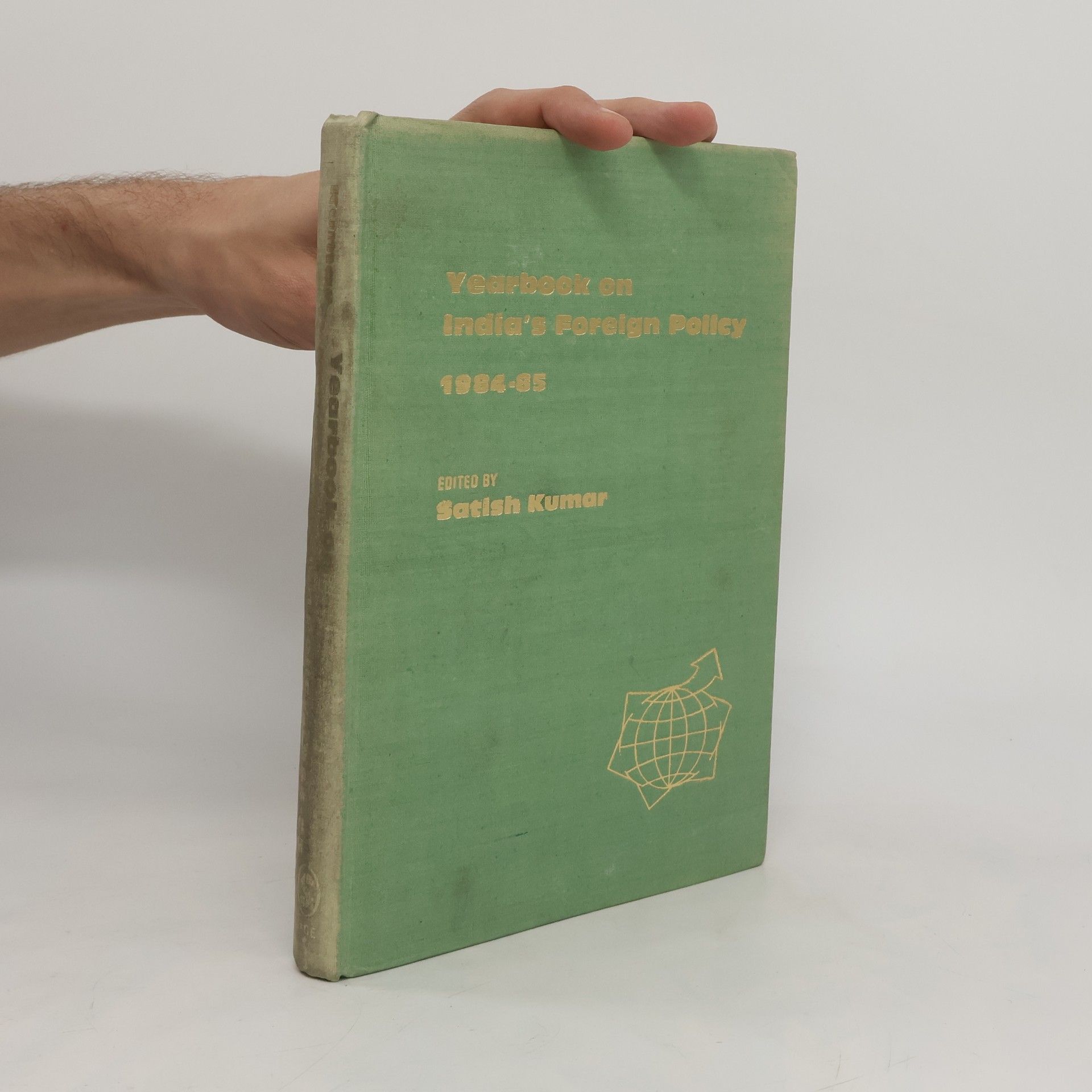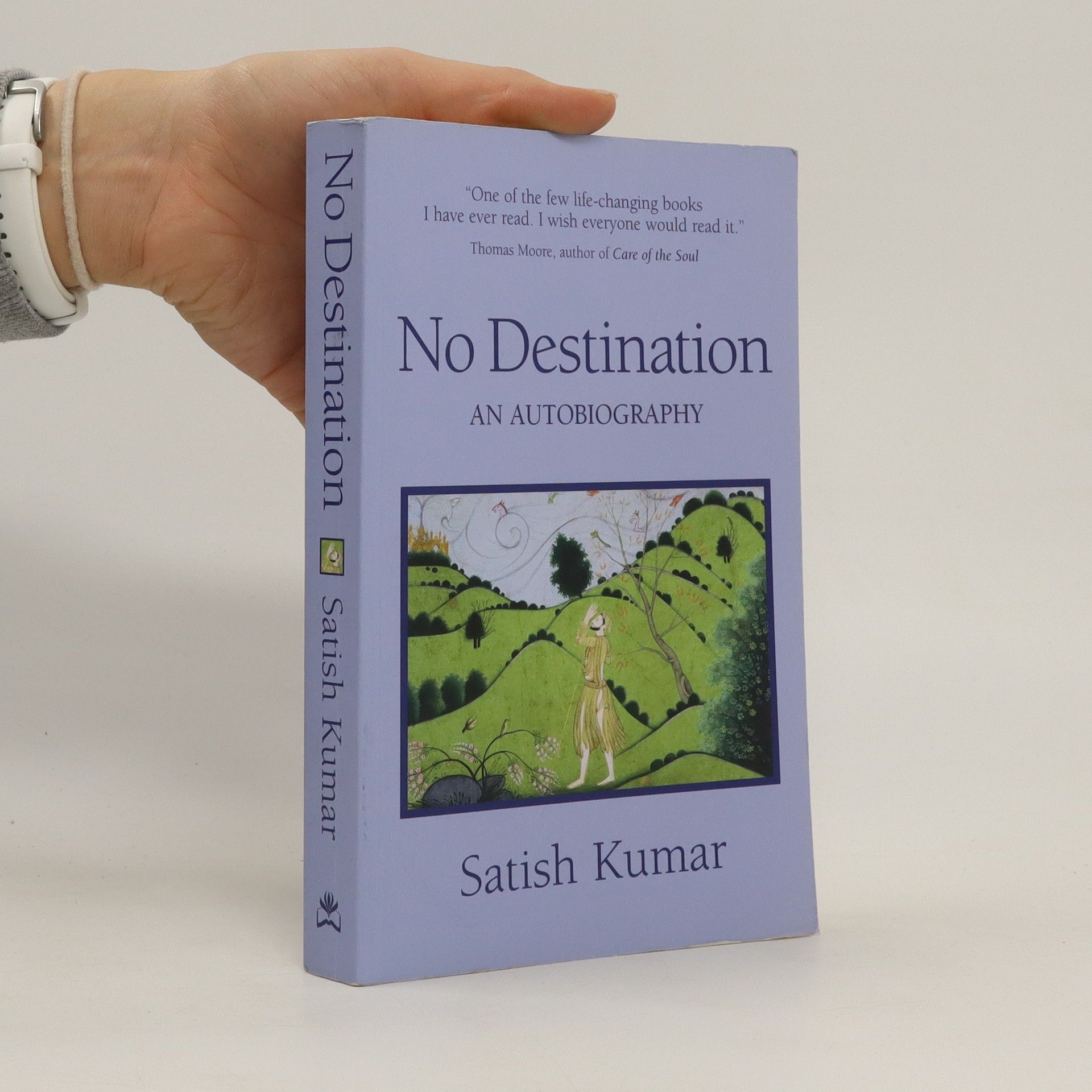There's an activist in all of us, and you don't have to shout about it to be heard. In Small World, Big Ideas, Satish Kumar collects the voices of some of the most passionate activists fighting for a better world, and shares their insights into how we can achieve this.
Satiš Kumár Boeken







No Destination
- 320bladzijden
- 12 uur lezen
Written with a penetrating simplicity, No Destination is an exhilarating account of an extraordinary life. When he was only nine years old, Satish Kumar renounced the world and joined the wandering brotherhood of Jain monks. Dissuaded from this path by an inner voice at the age of 18, he became a campaigner for land reform, working to turn Gandhi's vision of a renewed India into reality. Fired by the example of Bertrand Russell, he undertook an 8,000-mile peace pilgrimage, walking from India to America without any money, through mountains, deserts, storms, and snow. It was an adventure during which he was thrown into jail in France, faced a loaded gun in America, and delivered packets of “peace tea” to the leaders of the four nuclear powers. In 1973 he settled in England, taking on the editorship of Resurgence magazine, and becoming the guiding light behind a number of ecological spiritual and educational ventures. Following Indian tradition, in his 50th year he undertook another again without any money, he walked to the holy places of Britain—Glastonbury Lindisfarne and Iona. All of this and more is recounted in this fascinating autobiography.
How Satish Kumar walked 8,000 miles from the grave of Mahatma Gandhi to that of John F Kennedy in a symbolic pilgrimage for peace and non-violence.
Yearbook on India's Foreign Policy 1984-85
- 288bladzijden
- 11 uur lezen
This series of yearbooks provides an independent critique of India's foreign policy on a continuing basis and from a wide range of perspectives. The third volume in this series covers the period July 1984 -- June 1985. Among the issues discussed are India and the Nonaligned Movement; the Sino-Indian dialogue; India's role in Sri Lanka's ethnic crisis; developments in India's relations with Pakistan; India's attitude to the situation in Afghanistan; and an analysis of the Palestine question.
Maths in Moments Quantitative Aptitude for Competitive Exams
- 1184bladzijden
- 42 uur lezen
Whether you are appearing for college entrances or attempting the examination like Management or UPSC, Mathematics seems to be a hard nut to crack and that’s why Quantitative Aptitude is a must section to solve in order to get a better ranking in the examination.Introducing, “Maths in Moments” A new Pattern Comprehensive Textbook of Quantitative Aptitude that has been carefully and consciously penned by a panel of experts. The book includes almost all the chapters required as per the latest trend & pattern of the competitive exam, giving complete coverage to the syllabus, and proving as a universal resource. It trains both mathematical and non-mathematical background aspirants to solve problems through innovative alternative approaches without using pen & paper. The book only follows one Central Theme in each chapter that helps to Solve basic to high difficulty level questions using new alternative approaches. This book Divides the entire syllabus into 11 unitsGive multiple approaches to one problemProvides 3000+ Illustrations & 2500+ problems to cover all aspects of the chapterCritical Facts, Generic Version of question solving & Observation for quick revisionSolves arithmetic question without algebraic equations to accelerate the speedHighly useful for competitive exam like NRA (CET), SSC, Railways, Banks, etc.
YOU WIN DEFINITELY SUCCESS IS IN YOUR HAND
- 96bladzijden
- 4 uur lezen
Success requires dedication, hard work, and perseverance, often accompanied by initial struggles and sacrifices. It is not a permanent state but a temporary achievement that demands continuous effort and the development of positive habits. The author aims to reveal essential knowledge and characteristics that can help individuals attain lasting success, emphasizing that everyone is deserving of realizing their life purpose and achieving their dreams.
Exploring the intricate link between cognitive functions and health, this research highlights a bidirectional relationship that may help mitigate life-threatening challenges. It uncovers how positive health states influence cognitive functioning, with a particular emphasis on executive functions as stronger predictors than inhibitory processes. This investigation contributes to ongoing debates in psychology, revealing the potential mechanisms that connect mental well-being and cognitive performance, thereby enriching the understanding of health and illness dynamics.
Exploring the interconnectedness of spiritual and social well-being with the health of the planet, this classic work by Satish Kumar emphasizes the importance of nurturing both personal and environmental harmony. The book invites readers to reflect on their relationship with nature and encourages a holistic approach to living sustainably. Through insightful perspectives, it highlights the need for a deeper understanding of our role in fostering a balanced ecosystem.
Exploring the connection between personality traits and alcohol use disorder, this book delves into how individual behavior patterns influence adjustment to modern life. It highlights the significant impact of alcohol use disorder on various aspects of a person's existence, including physical and psychological health, social interactions, and legal issues. The text emphasizes the prevalence of alcohol-related problems in Indian society and identifies sensation seeking and life satisfaction as key predictors of adjustment for those struggling with alcoholism.
ASTRONOMY & ASTROPHYSICS RESEARCH IN INDIA: A SCIENTOMETRIC ANALYSIS
- 264bladzijden
- 10 uur lezen
Focusing on the evolution of Astronomy and Astrophysics research in India, this book provides a comprehensive study from ancient times to the present technological era. It includes a quantitative analysis of research publications using various scientometric tools, making it a valuable resource for researchers, policymakers, and students interested in the field and the productivity of scientific research.